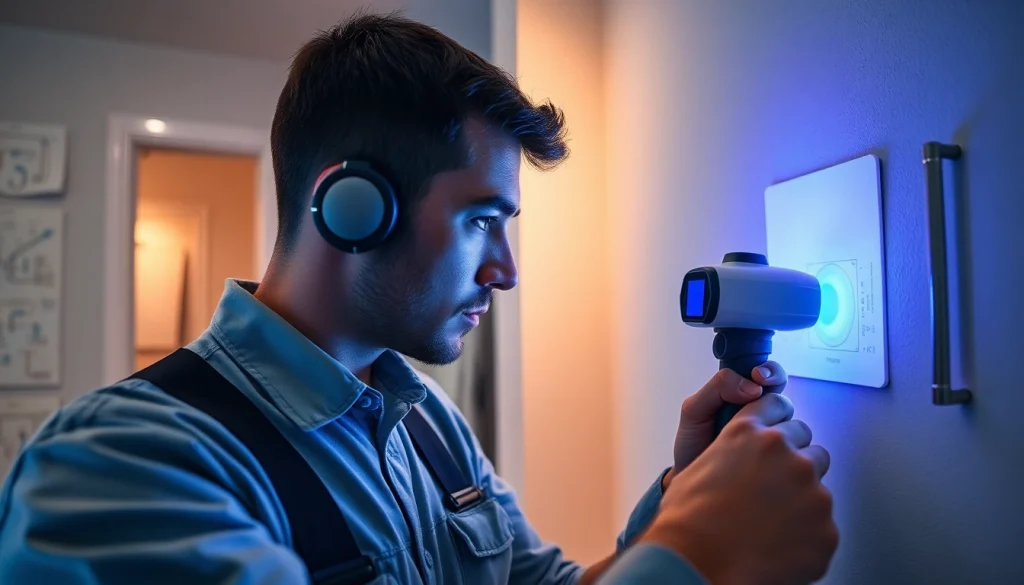Essential Guide to Identifying Central Heating Hidden Leak Solutions in 2025

Understanding Central Heating Hidden Leaks
Central heating hidden leaks are a common yet often overlooked issue that can lead to significant property damage and increased utility bills. These leaks can occur within the intricate piping systems of residential heating installations, sometimes going undetected for long periods. Identifying and addressing these leaks promptly is essential for maintaining a home’s efficiency and safety. For those concerned about a potential central heating hidden leak, understanding the nature of these issues and knowing the warning signs can save homeowners from costly repairs and reduce energy wastage.
What is a Central Heating Hidden Leak?
A central heating hidden leak refers to any leak within the closed-loop system that circulates hot water to radiators or underfloor heating installations. Unlike visible leaks that can be easily spotted, hidden leaks are often concealed behind walls, under floors, or within ceiling spaces. They can lead to various problems, including water damage, mold growth, and decreased efficiency of the heating system. The complexity of these systems makes it challenging to diagnose leaks without proper tools or expertise.
Common Signs of Hidden Leaks in Heating Systems
- Unexplained Increase in Heating Bills: A sudden spike in your heating costs can indicate a hidden leak, as the system works harder to maintain the desired temperature.
- Cold Spots on Radiators: If some radiators are not heating up as they should, it may signal a leak preventing hot water from circulating properly.
- Visible Dampness: Wet patches on walls or ceilings, particularly near pipes, can suggest a leak that needs urgent attention.
- Low Pressure on the Boiler: Frequent drops in boiler pressure can indicate water escaping through a hidden leak in the system.
- Unusual Noises: Sounds like gurgling or hissing may point to air trapped in the system due to a leak.
Consequences of Ignoring Leaks
Ignoring a hidden leak in a central heating system can lead to dire consequences. Water damage can compromise structural integrity, leading to costly renovations. Continuous exposure to moisture can foster mold growth, posing health risks to residents. Furthermore, the efficiency of your heating system diminishes, resulting in higher energy bills and an increased environmental footprint. Early detection and intervention are crucial to avert these negative outcomes.
Diagnosing Central Heating Hidden Leaks
Diagnosing hidden leaks in a central heating system requires a blend of observational skills, technical knowledge, and advanced tools. Professional leak detection services employ sophisticated technology and methods that traditional DIY approaches may lack. This section will delve into effective techniques for leak detection, examining how technology has evolved to enhance diagnosis.
Effective Techniques for Leak Detection
There are several tried-and-tested methods for detecting hidden leaks in central heating systems:
- Visual Inspection: A thorough inspection of visible piping, joints, and connections can sometimes reveal signs of leaking.
- Pressure Testing: Isolating sections of the heating system and monitoring pressure changes can confirm the presence of leaks.
- Thermal Imaging: Utilizing thermal imaging cameras can highlight temperature differentials, pinpointing areas where leaks may exist.
Using Technology to Find Hidden Leaks
Emerging technologies have revolutionized leak detection, allowing for more accurate and less invasive investigations. Advanced tools include:
- Acoustic Listening Devices: These devices can detect the sound of escaping water, pinpointing leaks even in buried pipes.
- Tracer Gas Detection: Introducing a non-toxic gas into the system helps identify leak locations based on gas escape patterns.
- Moisture Mapping: This method assesses moisture levels within walls or floors to identify damp areas indicative of hidden leaks.
DIY vs. Professional Services: What’s Best?
While some homeowners may attempt DIY leak detection, the complexities of modern heating systems often necessitate professional services. Trained experts possess the experience and equipment to accurately identify and address leaks, minimizing the risk of further damage. For comprehensive solutions, enlisting a specialist service can often save time and money in the long run.
Preventive Measures for Central Heating Systems
Preventing hidden leaks from developing in your central heating system is as important as detection. Implementing regular maintenance and adopting smart practices can significantly prolong the lifespan of your heating system while ensuring optimal performance.
Regular Maintenance Tips to Avoid Leaks
- Annual Inspections: Schedule yearly inspections with qualified technicians to identify potential weaknesses in your heating system.
- Flush the System: Regularly flushing your heating system removes debris and sediments that can cause corrosion and lead to leaks.
- Monitor Pressure Levels: Keep an eye on your boiler’s pressure gauge; sudden drops can indicate leaks.
Innovative Solutions to Ensure System Integrity
Utilizing innovative technology can help bolster the integrity of your heating system against leaks:
- Smart Thermostats: These devices can detect inconsistencies in heating and alert homeowners to potential issues.
- Leak Detection Sensors: Installing sensors throughout your heating system can provide real-time monitoring and alerts if leaks are detected.
Monitoring Systems for Early Leak Detection
Implementing continuous monitoring of your central heating system allows for early identification of potential leaks. Combined with automated alerts and regular assessments, homeowners can take proactive measures to address issues before they escalate.
Repairing Central Heating Hidden Leaks
Once a hidden leak is diagnosed, swift action is essential to implement effective repairs. Knowing how to address these leaks can save you time and money while ensuring the safety and efficiency of your heating system.
Step-by-Step Guide to Repairing Hidden Leaks
Repairing hidden leaks typically involves the following steps:
- Assessment: Thoroughly assess the area to confirm the leak’s source.
- Shut Off the System: Turn off the heating system to prevent further water damage.
- Access the Leak: Depending on the leak location, this may involve opening walls or floors.
- Repair the Leak: Use appropriate materials and techniques to address the leak.
- Test the Repair: Repressurize the system to ensure the leak is fully resolved.
Choosing the Right Materials for Effective Repairs
Selecting suitable materials is crucial to ensuring a durable repair. Consider using the following:
- Pipes and Fittings: Opt for high-quality materials that match the existing system.
- Sealants: Use appropriate sealants designed for heating systems to prevent future leaks.
When to Call a Professional for Repairs
While some leaks can be repaired by savvy homeowners, others may require professional intervention, especially if:
- The leak is difficult to access or locate.
- The heating system experiences significant pressure loss.
- There is extensive water damage or mold presence.
The Future of Leak Detection Technologies
As technology advances, so too do the methods for detecting and repairing leaks within central heating systems. The future promises even greater accuracy and efficiency in leak detection and repair.
Emerging Technologies in Leak Detection
- AI and Machine Learning: These technologies can analyze data patterns to predict potential leak occurrences before they happen.
- Advanced Sensors: Future developments may see even more sensitive sensors that can detect minute changes in pressure or temperature.
Trends to Watch in 2025 and Beyond
The leak detection industry is expected to evolve significantly in the coming years. Trends include a shift toward complete automation and integration with smart home systems, making it easier for homeowners to monitor and maintain their heating systems.
How to Keep Your Home Safe and Efficient
Incorporating proactive strategies for leak detection and repair ensures your home remains safe and energy-efficient. Regular maintenance, employment of innovative technologies, and reliance on professional services when needed can dramatically improve your home’s heating system health.




